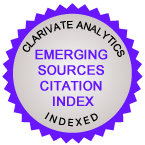Abandoned land: Legal aspects and utilization in Indonesia
DOI:
https://doi.org/10.21638/spbu14.2025.116Аннотация
One of the fundamental problems in the land sector in Indonesia is inequality in the distribution pattern of land ownership, control, use, and utilization. This situation is further exacerbated by the large amount of land abandoned by land rights owners, which covers millions of hectares. This article digs deeper into the significance of controlling abandoned land in efforts to realize agrarian reform that prioritizes a more equitable distribution of land ownership and use. The Indonesian Constitution (Undang-Undang Dasar 1945) and the Basic Agrarian Law (Undang-Undang Pokok Agraria, UUPA) establish a relationship between the state and citizens regarding land and natural resources. Abandoned land refers to land that is not utilized and does not provide benefits to the community, which, as a result, becomes land that is directly controlled by the state. Control of abandoned land is key to addressing the unequal concentration of land ownership, encouraging social and economic balance, and increasing food and energy security. Nevertheless, the process of controlling abandoned land addresses a number of challenges, including enforcing complex laws, resistance from rights holders, and errors in implementation procedures. The success of agrarian reform depends on factors such as strong government support, the presence of empowered farmer and community organizations, the availability of accurate data, and adequate budget allocation.
Ключевые слова:
abandoned land, access reform, agrarian reform, customary law, land rights, land redistribution, state control, state land
Скачивания
Библиографические ссылки
Загрузки
Опубликован
Как цитировать
Выпуск
Раздел
Лицензия
Статьи журнала «Вестник Санкт-Петербургского университета. Право» находятся в открытом доступе и распространяются в соответствии с условиями Лицензионного Договора с Санкт-Петербургским государственным университетом, который бесплатно предоставляет авторам неограниченное распространение и самостоятельное архивирование.






